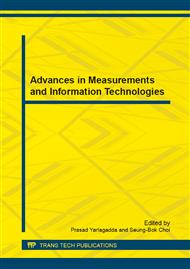p.496
p.502
p.506
p.512
p.517
p.522
p.526
p.530
p.534
Study on PCA-Based BP Neural Network Algorithm
Abstract:
Using the neural network to deal with complex data, because the pending sample with many variables, aiming at this nature of the pending sample and the structure properties of the BP neural network, in this paper, we propose the new BP neural network algorithm base on principal component analysis (PCA-BP algorithm). The new algorithm through PCA dimension reduction for complex data, got the low-dimensional data as the BP neural networks input, it will be beneficial to design the hidden layer of neural network, save a lot of storage space and computing time, and conductive to the convergence of the neural network. In order to verify the validity of the new algorithm, compared with the traditional BP algorithm, through the case analysis, the result show that the new algorithm improve the efficiency and recognition precise, worthy of further promotion.
Info:
Periodical:
Pages:
517-521
Citation:
Online since:
February 2014
Authors:
Price:
Сopyright:
© 2014 Trans Tech Publications Ltd. All Rights Reserved
Share:
Citation:


